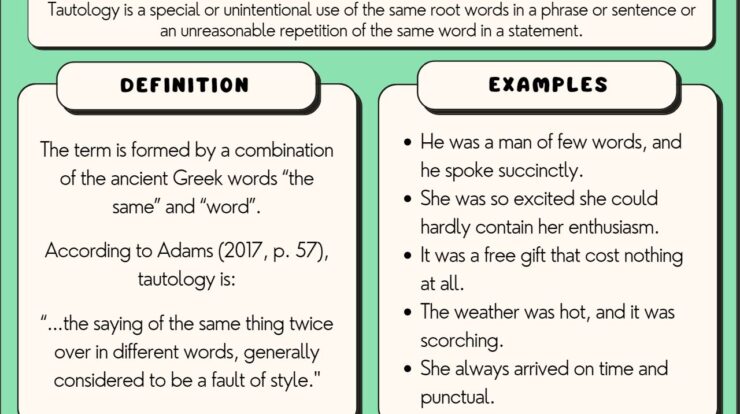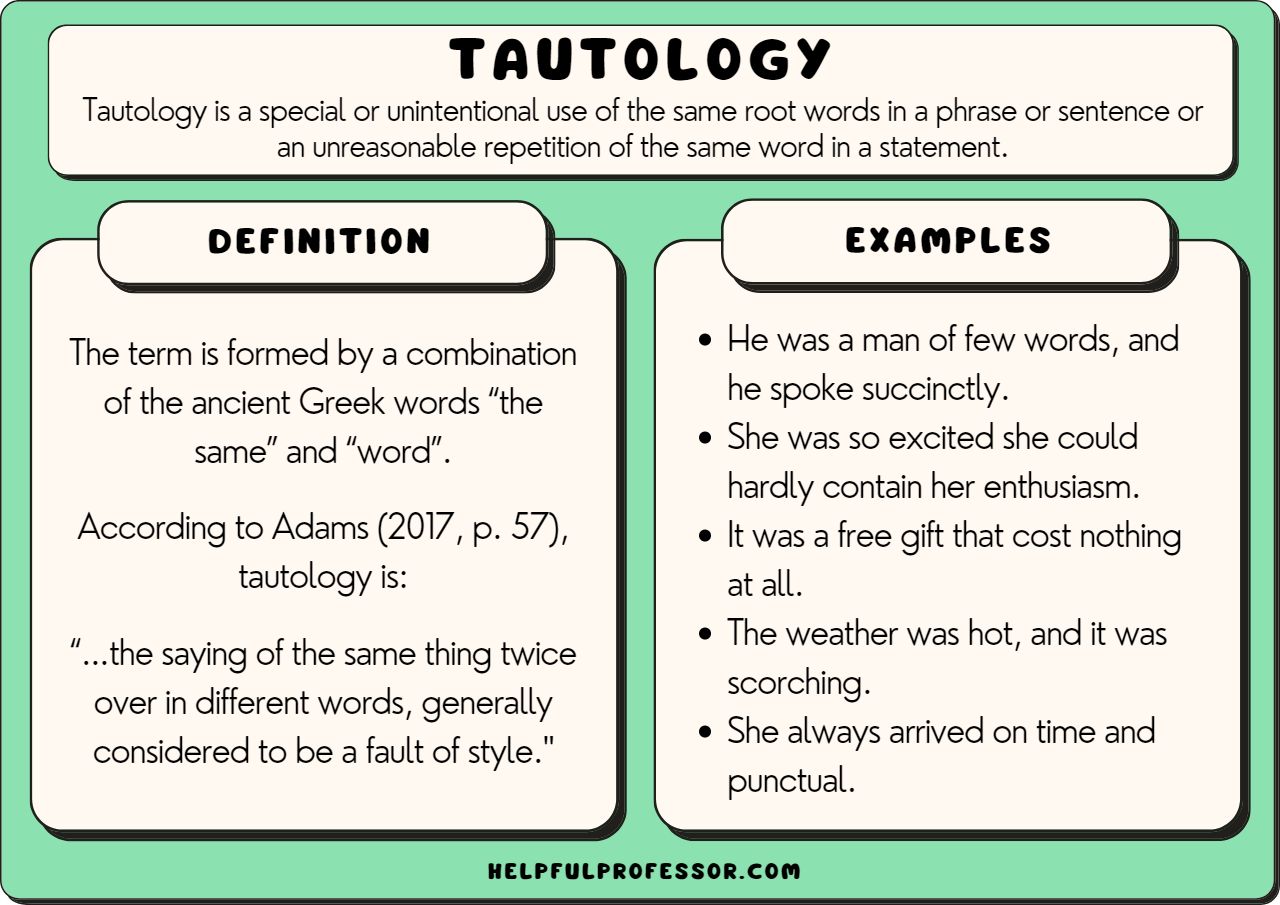
Tautological definition, a fundamental concept in logic, refers to a statement that is true by virtue of its logical form alone, regardless of the truth value of its components. Its simplicity and inherent limitations shape its usage across various fields, from philosophy to computer science.
This article delves into the intricacies of tautological definitions, exploring their applications and implications in different contexts.
Tautological Definition: Core Concept

Tautological definitions are a specific type of definition in which the definiendum (the term being defined) is essentially restated in the definiens (the definition itself). In other words, the definition simply repeats the meaning of the term it is intended to define.
For example, if we define “bachelor” as “an unmarried man,” the definition is tautological because the term “unmarried man” already conveys the same meaning as “bachelor.” Tautological definitions are often considered redundant and unhelpful because they do not provide any new information or insights into the concept being defined.
Tautology in Different Contexts
Logic and Philosophy
In logic and philosophy, a tautology is a statement that is true in all possible interpretations or scenarios. For example, the statement “All bachelors are unmarried” is a tautology because it is true regardless of the specific individuals or circumstances involved.
Tautologies are often used in logical proofs and arguments to demonstrate the validity of certain conclusions.
Mathematics
In mathematics, tautologies are known as “identities” and are used to express relationships between mathematical expressions. For example, the identity “a + b = b + a” is a tautology because it is true for all values of a and b.
Tautologies are essential in mathematical proofs and calculations, as they allow mathematicians to manipulate and simplify expressions.
Natural Language
In natural language, tautologies are often used to emphasize a point or to create a sense of certainty. For example, the statement “It is what it is” is a tautology that is often used to convey that a situation is unchangeable or inevitable.
Tautology vs. Non-Tautology, Tautological definition
| Tautology | Non-Tautology |
|---|---|
| True in all possible interpretations | True in some, but not all, interpretations |
| Redundant and uninformative | Provides new information or insights |
| Used in logical proofs and mathematical identities | Used in everyday language and communication |
- Example of a tautology:“All squares have four sides.”
- Example of a non-tautology:“Some squares are blue.”
Applications of Tautologies
Computer Science
In computer science, tautologies are used in logic programming and automated reasoning. For example, tautologies can be used to represent logical constraints in a program or to derive new facts from a set of known facts.
Linguistics
In linguistics, tautologies are used to analyze the structure and meaning of sentences. For example, tautologies can be used to identify redundant phrases or to determine the logical relationships between different parts of a sentence.
Artificial Intelligence
In artificial intelligence, tautologies are used in knowledge representation and reasoning systems. For example, tautologies can be used to represent facts and rules in a knowledge base or to infer new knowledge from existing knowledge.
Tautology and Related Concepts
Redundancy
Tautologies are often considered redundant because they do not provide any new information beyond what is already contained in the definiendum. However, some philosophers argue that tautologies can serve a useful purpose by emphasizing a point or by making a statement more emphatic.
Logical Equivalence
Tautologies are closely related to logical equivalence. Two statements are logically equivalent if they have the same truth value in all possible interpretations. Tautologies are a special case of logical equivalence where the two statements are identical.
Semantics
Tautologies play an important role in the study of semantics, which is the branch of linguistics that deals with the meaning of words and sentences. Tautologies can be used to analyze the logical relationships between different words and phrases and to determine the truth value of statements.
Conclusive Thoughts

In conclusion, tautological definitions provide a concise and efficient way to express certain types of statements. However, their limitations and potential for redundancy must be carefully considered. Understanding the nuances of tautologies is essential for effective communication and logical reasoning.
Detailed FAQs
What is the main purpose of a tautological definition?
To express a statement that is true solely based on its logical structure, regardless of the truth value of its individual components.
Can tautological definitions be used in everyday language?
While they are primarily used in formal contexts, tautologies can sometimes be found in everyday language, such as the statement “All bachelors are unmarried men.”
What are the potential drawbacks of using tautological definitions?
They can be redundant and may not provide any new information beyond what is already implied by the terms they define.






